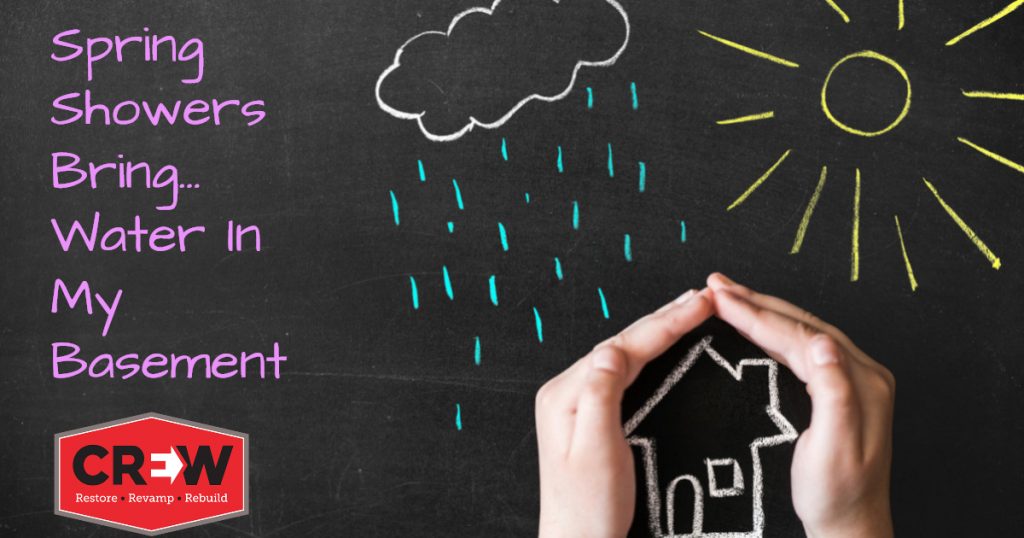Spring is a great time to plant flowers and gardens. At the same time, spring tends to reveal issues with water getting into basements. It happens quite often, as 60% of homeowners have some type of water or moisture issue in their basement or crawl space. There could be a few different reasons why this happens. Let’s dive in, and look at the causes for water getting into the basement.
When we have a heavy rain, its important that everything is working properly. If your windows were not installed correctly, or if the draining system gets clogged, your window well can become a pool. When there is nowhere else for the water to go, it will seep through and into your basement.
The most common cause for water to get into your basement is from the pressure of the water in the soil around the foundation. There are 2 different forms of pressure that can cause water issues.
When the soil around the foundation is looser, it tends to absorb more water. If your gutters and downspouts get clogged, the water gets discharged right next to the foundation. That soil will expand and create lateral pressure against the foundation, causing damage to your foundation and creating leaks in the basement.
During heavy or consistent periods of rain,obviously, the soil becomes saturated. This creates hydrostatic pressure that can push moisture through the walls in your basement and floor.
Water gets into your basement a few different ways:
- At the joint where the floor and wall meet
- Through any cracks in the wall or floor
- Through cracks in masonry foundation walls or cracks in mortar joints (space between bricks).
To keep your basement dry, there are a few different things you can do.
- Keep your gutters clean. When there are mature trees in your area, you will want to clean your gutters and downspouts a minimum of 2 times a year, and consider installing leaf guards. Glean gutters keep water flowing away from your home. Once clogged, the water will pool around your foundation.
- Repair your windows wells. A simple solution would be to install a window well cover. this will prevent leaves and debris from clogging p your drain, allowing water to seep in your basement.
- Install a drainage system. To minimize hydrostatic pressure, you can install drain tile around the joint where the floor and wall meet. This is where most water leaks occur. By installing drain tile, you can capture the water before it makes its way onto your basement floor. The drain tile will carry the water to the sump pump, and be pumped out of your home.
- Inspect and update the grading around your home. You want a pitch of 1 inch per foot around your home. When it rains, the pitch will keep water flowing away, instead of pooling around your foundation.
- Early spring is a great time to test your sump pump, and make sure it is working properly to prevent flooding in your basement. Some older homes do not have sump pumps. If you frequently get water in your basement, you should consider having one installed.
As weather starts to get warmer, it is important to protect your home from water damage. If you experience water damage or flooding in your home, contact a professional restoration company, like Crew Construction and Restoration, to clean and restore your home. We will provide you with a free estimate, and will work directly with you and your insurance from start to finish.
Crew Construction and Restoration



